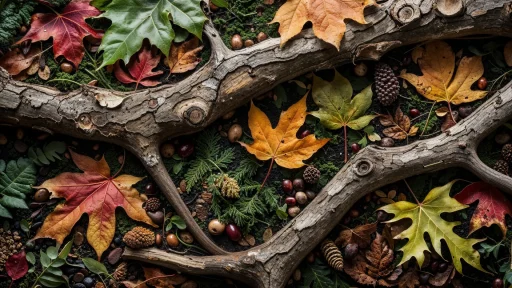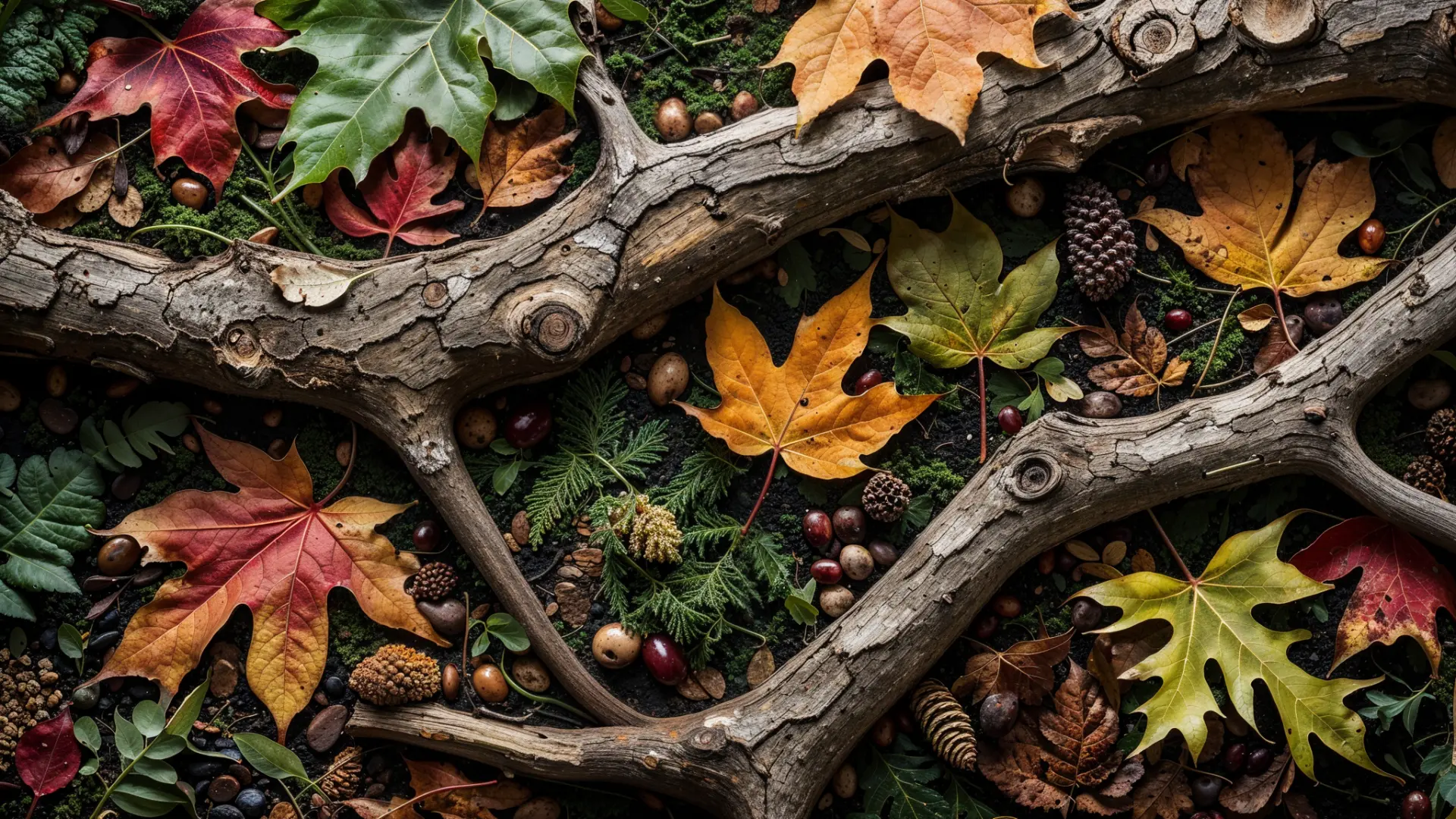Picture that feeling when your fingers glide across the smooth surface of silk, then the rough feel of an old tree bark. This stark contrast shows the power of texture in design. In the field of design texture is the absolute hero. Today, we focus on it.
Textures are the secret ingredient that makes an AI-generated image lifelike as you can almost touch it. Also, this is one of the reasons why some images stand out while others remain dull and lifeless.
In this blog post, we’ll explore the different types of textures and their practical uses, learn how to apply them in AI-generated images and see how they benefit the design industry. But most importantly, we’ll see how Tengr.ai makes this process easy and accessible to everyone. To demonstrate these points, we’ll showcase several examples of stunning realistic textures generated with Tengr.ai.
Now that we’ve touched on the importance of textures, let’s get a deeper understanding of what they actually are.

Understanding Textures
If you want to create rich and visually engaging images, learning about textures is useful. Actually, the word ‘texture’ refers to the surface quality or feel of an object in an image.
Textures can enhance visual appeal by adding depth and complexity to images. And not just that—they can even set your image’s overall mood and atmosphere. Different textures can evoke different moods, so using the right texture will influence the outcome. For instance, a smooth texture like silk can give a sense of calm and luxury, rough textures like tree barks suggest ruggedness, and soft ones like fur can make you feel warmth and comfort.
Furthermore, they have the power to give character and realism to images. By adding detailed textures, you can make the subject lifelike. Moreover, you can even highlight certain areas of the image by drawing the viewer’s attention to it. Using textures skillfully in your prompts is one of the best ways of creating truly rich and interesting images.
Additionally, they help designers create more effective visuals in their line of work. Now that we’ve covered how textures can enhance our images, let’s see the different types of textures we can generate using AI.
Types of Textures
Natural textures come from nature, for example: stone, wood, leaves, water, paper, bamboo, fabrics, leather and more. Generating these textures found in nature can be useful in interior design, graphic design, product design, architecture or even in fashion (natural materials like cotton, silk, wool, linen). As such, they remind us of the beauty of nature.



Artificial textures include man-made textures like synthetic fabrics, polished concrete, plastics, etc. These can be particularly useful in architecture, product design, interior design, or even film and theater (for costumes and props).


Abstract or geometric textures are repeating patterns of stylized abstract or geometric shapes. For instance, these patterns are used in textile design for different fabric types, in interior design for geometric patterned tiles for example, or graphic design for geometric backgrounds. Also, they are very versatile, offering endless possibilities for creating sophisticated, modern designs.



These types are just one way of understanding textures. However, they’re not rigid. Many textures can be put in multiple categories or can have characteristics from different types. Additionally, they can be characterized based on their tactile qualities, such as soft, rough, smooth, hard, etc. Or even based on visual qualities like shiny, matte, transparent, opaque, etc.
Every type of texture has its own qualities and serves different functions. Now let’s see how Tengr.ai enters the picture.
The Role of Tengr.ai in Texture Design
As you probably know by now, Tengr.ai offers three different tools for seamless, tileable pattern or texture design: InfinyPattern, InfinyWeave, and InfinyFlow. We had blog posts where we talked about each one of them and the characteristics and use cases of each one. They are ideal for creating textures and patterns. However, each tool serves different purposes, so you have to find the right one for your needs.
InfinyPattern is perfect for creating seamless, defined patterns for fabric design, wallpapers, and other decorative and practical design projects.
InfinyWeave is a little bit different. It creates more detailed and photorealistic textures or patterns, in a seamless way, making it ideal for 3D model texturing and game backgrounds.
The third one, InfinyFlow is perfect for abstract compositions, making it perfect for fabric design, wallpapers, and other creative projects.
Tengr.ai offers great possibilities for texture creation, whether you use it for professional projects as a designer, or just for fun. It can save you time and effort, making texture design accessible to everyone, regardless of their skill level.
After exploring Tengr.ai’s diverse capabilities for creating textures, let’s discover how they can be applied across various design fields.
Practical Applications of AI-Generated Textures
AI-generated textures are a game-changer for graphic design, and many more creative fields. Now, with Tengr.ai you can easily create lifelike textures, just by entering a simple text prompt. It’s as simple as that! After generating the desired texture, you can further use it in professional design software like Blender, Photoshop, and others.
In gaming, you need realistic, high-quality textures for creating immersive environments that can really engage players. Tengr.ai can create all kinds of high-quality textures with great accuracy. The better the texture, the better the gaming experience is for players.
In fashion, in architectural visualizations, and in interior design it’s crucial to simulate and preview the different types of fabrics and materials. To see how they look like and behave before producing physical samples. Also crucial for architects is the ability to present clients with realistic previews of different materials in real time.
Additionally, in the Film and television industry, textures can help with the designing of realistic costumes and props.
What’s more, textures can even be useful in education, making it possible to visualize training materials, especially in fields like biology, geology, and material science.
Tengr.ai can make all these possible.
As you can see, there are many branches in design where these textures can be used, so let’s see a few concrete examples created with Tengr.ai.
Examples of Textures
Now, let’s see a few interesting examples for different textures:
Prompt: “Heavily corroded metal texture, hyper-realistic, textured.”


Prompt: “Hyper-realistic image of a fine, soft sandy beach. Sunlit sand with subtle shadows.“

Prompt: “Close-up image of a veined marble texture, with intricate veins and a smooth finish.”

Prompt: “Close-up image of a lush, vibrant green leaf texture with detailed veins and dew drops on the surface.”

Prompt: “Photorealistic image of a luxury vinyl flooring texture that mimics dark oak wood, with realistic details such as grain, knots, and color variations.”

Prompt: “A delicate and soft floral silk texture, pastel colored, displaying detailed textures of silk, smooth and silky.”

Prompt: “Hyper-realistic image of a natural linen texture with a coarse weave. Coarse linen texture”

Prompt: “Photorealistic image of a high-resolution brushed metal texture. The metal should display fine, (horizontal brushing patterns in a silvery-grey color), suitable for use in industrial design elements like appliance fronts or modern furniture.”

Prompt: “A hyper-realistic image of a vibrant lichen texture on a rock, with rich colors and textures.“

Prompt: “A vibrant close-up image of colorful autumn leaves laying on the wet forest ground.“

Prompt: “A geometric texture inspired by Art Deco style. Use fan shapes and zigzag patterns in gold and black, and a slight embossed effect for luxury.“

Prompt: “Seamless pattern of interlocking circles in various sizes. Use a monochromatic gradient from light gray to charcoal. Add subtle shadow effects for depth.”

Prompt: “A hyper-realistic thick textured acrylic paint in a swirling pattern. Main colors are white and dark gray, with yellow accents to add a pop of color. Thick wet paint texture, fluid movement, dripping.”

Final Words
Throughout this exploration of textures in AI image generation, we’ve seen how important they are. If we wanted to summarize it all in one sentence, it would be: textures bring designs to life. With the rapid advancement of AI technology, the possibilities for texture generation also expand.
Tengr.ai is the perfect tool to explore these possibilities and transform your ideas into stunning images. Thanks to tools like Tengr.ai, the power to create rich, complex textures is now easier than ever. So don’t hold back, start experimenting, and create your own unique textures. Whether you’re a professional designer or create just for fun, Tengr.ai is a versatile tool that’s great for everyone.
Join our community of creative AI users and share your texture designs with us on social media. Let’s shape the future of design together!






